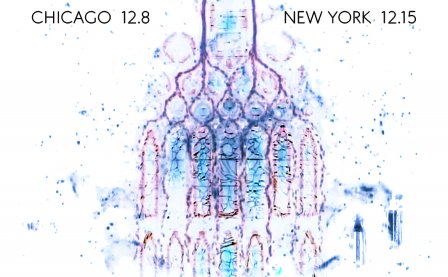One of the crucial moments in the history of synthesis occurs in the progressive/”world” masterpiece “Aguirre” from Popol Vuh’s soundtrack to Werner Herzog’s Aguirre, der Zorn Gottes. Its architecture is very basic: a low-level Moog bass line swells in and out to provide a rhythmic basis for a soaring, lush choir. The voices on the piece are real, but no choir sang in Popol Vuh’s studio for that soundtrack. What we hear instead is a unique instrument called a “choir organ,” which basically consisted of a keyboard connected to tape players, each containing a tape of a choir singing a specific note (Florian Fricke had borrowed the organ from Amon Düül II; more information is on the Popol Vuh fansite here) . In essence, this is an early form of sampling; in execution, “Aguirre” witnesses the birth of what would come to be known as the vocal pad. Vocal pads would later play a large role in the sampling synthesis of the 80s and early 90s, especially in new age music, their oohs and aahs evoking both the humanity of the voice and the coldness of electronics. The same could be said of the vocoder (as epitomized by Kraftwerk’s use of it), which transforms the voice via filters into the classic robot voice. Sounds that come from either method feel angelic or alien; sometimes beautiful, sometimes cheesy; sometimes the equipment “perfects” the voice, sometimes it covers it in sugary syrup.
Apart from his usual use of sequenced synths for his rhythmic components, Steve Hauschildt (Emeralds) focuses specifically on these two techniques on Sequitur. In a way, the album feels like a concept album, in that each of its tracks explore a particular use of this technology. It’s as if Hauschildt is tracing the synthesized voice through past genres, stopping at various landmarks to write songs. As an exploration of these techniques, Sequitur is instructive and conceptually dense, but its songs suffer from the same accusations that people have been leveling at these techniques for years. The oceans of bliss appear on this album, but the melodies and lyrics tend only to add to the saccharine qualities common to the technology.
Sequitur, like this year’s Emeralds release Just to Feel Anything, can be read as an attempt to reclaim dated technology from the missteps of previous users. But though the lush pads on Sequitur can be genuinely breathtaking, it’s rare that Hauschildt allows them to breathe (except on the ambient “Kept,” which overflows with swelling pads and evolving synth lines, being perhaps the closest Hauschildt comes to the Popol Vuh track cited above). Instead of avoiding the pitfalls of the past, we hear them recapitulated. The synth-pop track “Constant Reminders” uses vocoded lyrics over a simple bass line and drum machine. Almost all its layers reveal a penchant for the cheesiness of the genre and the sounds themselves. Hauschildt executes Harmonia-esque kosmische with finesse on “Mixed Messages,” but no one ever questioned Harmonia’s taste. Its Sequitur’s exploration of the areas of bad taste that seem most questionable as a project, and though Hauschildt seems to understand these moments in music history well enough to reproduce them, their return as an artifact does not charge them with any new power.
While vocal pads and new age textures are witnessing a resurgence, it’s in part due to their potential for beauty and the bliss they symbolically evoke. Vocoding might have potential for beauty, but its primary use has typically been to make a voice sound like a robot. There may be a conceptual layer here that provides some comment on how art fuses with technology, how technology shapes the artist’s voice and ultimately fails to capture its humanity, meeting it in a suspended space between circuit and vocal cord. But we have seen how it fails already. Sequitur contains powerful resonances with the past, and it certainly reorganizes some beautiful moments that have been left behind, but some of these moments were left there for a reason.
More about: Steve Hauschildt




